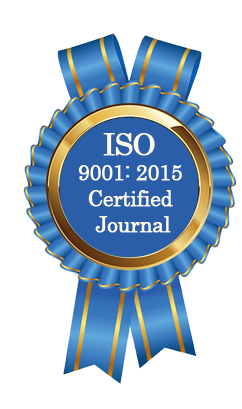| All | Since 2020 | |
| Citation | 105 | 60 |
| h-index | 4 | 4 |
| i10-index | 3 | 2 |
WJAHR Citation 
Login
News & Updation
Best Article Awards
World Journal of Advance Healthcare Research (WJAHR) is giving Best Article Award in every Issue for Best Article and Issue Certificate of Appreciation to the Authors to promote research activity of scholar.
Best Article of current issue
Download Article : Click here
Indexing
Abstract
INCIDENCE OF RETINAL RE-DETACHMENT AFTER SILICON OIL REMOVAL
Adel Rifaee Hannawi*, Shahir Khalaf AL-Hussein and Duaa Ismael I. Al-Ahmed
ABSTRACT
Background: the term retinal detachment refer to separation of neuroepithelium from pigment epithelium (rather than the detachment of retinal pigment epithelium from the choroid). The most common cause of retinal detachment (RD) is formation of a break in the neuroepithelium which allows fluid from the vitreous cavity to enter into the sub retinal space creating rheugmatogenous RD, the breaks are sub divided into tears which occurs secondary to dynamic vitreo-retinal traction , and holes which occurs secondary to localized retinal atrophy. Once the detachment occurred identification of the retinal break is primary aim of surgery and once the break is closed the RD should not return , the attachment of silastic explant to the sclera of the eye to create an indent in the globe underneath the break allows the retina to re-attached alternatively the vitreous is removed by parsplana vitrectomy and along acting gas bubble such as sulphahexafloride or perfloro propan or silicon oil may be inserted into the cavity when proliferated vitreo retinopathy (PVR) is presented. Silicon oil is associated with a numbers of complications such as cataract, glaucoma, refractive changes, retinal toxicity and risk of re-detachment after silicon oil removal. Aim: to find the incidence of retinal re-detachment after silicon oil removal in relation to the type of silicon used, time of silicon removal, type of retinal detachment and age of the patient. Methods: Study Setting: IbnAlhaitham eye teaching hospital were chosen Baghdad City capital of Iraq. Study Design: prospective study was conducted in between the period from January 2010 till January 2011. Sample Size: 150 patient who underwent previous PPV and silicon oil injection due to retinal detachment was included in this study follow up for six months and more to see how many of them will have retinal re-detachment after silicon oil removal. this sample was distributed by multistage stratified simple random technique. Data Analysis: Descriptive and analytic statistical tools were applied. Results: 150 patient was included in this study follow up for six months and more, 100 of them has had rhegmatogenous retinal detachment, 50 of them has had tractional retinal detachment, 11 of them has had grade A PVR, 18 has had grade B PVR, 71 of them had grade C PVR. From the total number 21 of them have retinal re-detachment after silicon oil removal as will discloses in the tables. Conclusion: In this study 13 patients with rhegmatogenous retinal detachment and 8 patients with tractional retinal detachment has had retinal re-detachment after silicon oil removal.
[Full Text Article] [Download Certificate]
